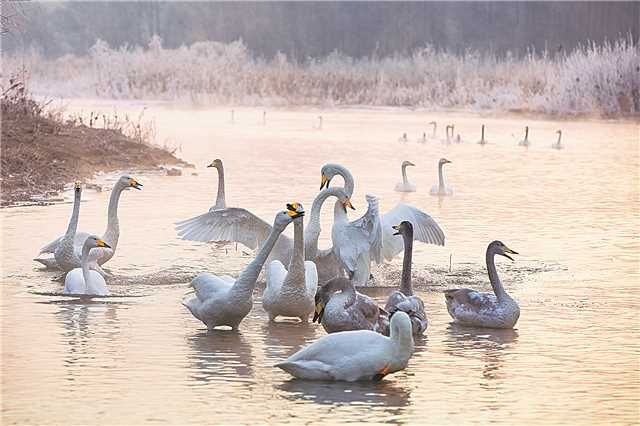Environmental restoration prompts red-crowned cranes to return to Liaoning


Crawling through thick clumps of reeds and grass, Yu Lian, an ornithologist in Northeast China's Liaoning province, had a notable encounter with a 1.5-meter-tall red-crowned crane, whose beak clamped on a long stem of a reed.
Without the slightest hesitation, the crane crouched swiftly and spread and flapped its wings in an attacking posture. Although Yu knew that the pounce of the crane, whose bone density is several times that of a human, would break his ribs with no difficulty, his delight still outweighed his fear.
Its manifest nesting behavior and unusual vigilance indicated that the red-crowned crane had engaged in breeding, something that had not been observed around the estuary of the Daling River in Jinzhou city, Liaoning, for about 14 years. The endangered red-crowned crane is under national first-class protection, and the wetland around the estuary of the Daling is regarded as one of the southernmost breeding grounds worldwide for these rare birds.
According to Yu, who is vice-president of the Jinzhou Wildlife and Wetland Protection Association, environmental changes and human activities mean there has been no record of the endangered birds breeding around the Daling's estuary since 2009.
"We discovered that the first two birdlings had been born on May 12 and 13, respectively," Yu said. "After two weeks, they had grown a lot and were able to run around."
The breeding process of at least four pairs of red-crowned cranes has been observed, and the birdlings of three pairs have successfully hatched, said Zu Fengkun, director of the local forestry and grassland bureau. Yu noted that the crane's low fertility rate of just two eggs per nest and the low survival rate of nestlings has led to a slow reproduction rate.
Guo Yumin, a professor at Beijing Forestry University, said: "Red-crowned cranes are picky about their breeding grounds. They need enough food, good biodiversity and, particularly, the safety of the surrounding environment."
The recurrence of natural breeding of the red-crowned cranes in the area demonstrates that the environment of the Daling River Estuary has undergone fundamental improvements in recent years, becoming suitable for the endangered birds to breed again, Guo said.
Pei Qiang, general manager of the Daling River Estuary Wetland Park, said, "Ten years ago, when we started the wetland restoration project in the area, it suffered from salinization and coastal erosion, which had made it almost a barren beach with sparse vegetation.
"In contrast, the wetland salinity has now been greatly reduced, and reeds have recovered an area of 22 square kilometers, three times larger than before."
He added that the wetland conservation process has made the area a paradise for birds to breed and spend the winter.
More than 10 species are under national first-class protection, and more than 50 are under second-class protection in the wetland park, including oriental white storks and great bustards.
Jinzhou is located along a primary bird migration corridor, so it welcomes millions of wild migratory birds every year.
From 2016 to 2020, local authorities restored more than 2,666 hectares of wetland, bringing the number of bird species spotted in the city to more than 370.
Xinhua
- Student detained on suspicion of the death of his roommate
- Smart teaching system launched for international Chinese learning
- Shanghai prepares to open parks 24 hours a day
- Action taken over Chongqing Gas Group overcharging
- Xi: Crucial role for new PLA force
- Obesity, myopia growing issues among youth



































